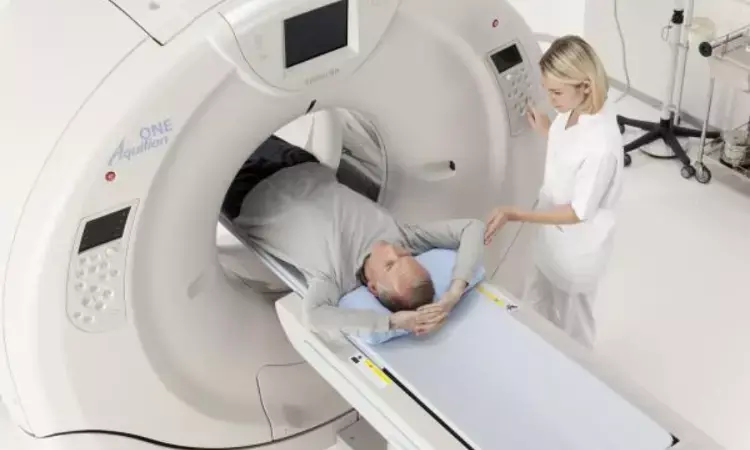- Home
- Medical news & Guidelines
- Anesthesiology
- Cardiology and CTVS
- Critical Care
- Dentistry
- Dermatology
- Diabetes and Endocrinology
- ENT
- Gastroenterology
- Medicine
- Nephrology
- Neurology
- Obstretics-Gynaecology
- Oncology
- Ophthalmology
- Orthopaedics
- Pediatrics-Neonatology
- Psychiatry
- Pulmonology
- Radiology
- Surgery
- Urology
- Laboratory Medicine
- Diet
- Nursing
- Paramedical
- Physiotherapy
- Health news
- Fact Check
- Bone Health Fact Check
- Brain Health Fact Check
- Cancer Related Fact Check
- Child Care Fact Check
- Dental and oral health fact check
- Diabetes and metabolic health fact check
- Diet and Nutrition Fact Check
- Eye and ENT Care Fact Check
- Fitness fact check
- Gut health fact check
- Heart health fact check
- Kidney health fact check
- Medical education fact check
- Men's health fact check
- Respiratory fact check
- Skin and hair care fact check
- Vaccine and Immunization fact check
- Women's health fact check
- AYUSH
- State News
- Andaman and Nicobar Islands
- Andhra Pradesh
- Arunachal Pradesh
- Assam
- Bihar
- Chandigarh
- Chattisgarh
- Dadra and Nagar Haveli
- Daman and Diu
- Delhi
- Goa
- Gujarat
- Haryana
- Himachal Pradesh
- Jammu & Kashmir
- Jharkhand
- Karnataka
- Kerala
- Ladakh
- Lakshadweep
- Madhya Pradesh
- Maharashtra
- Manipur
- Meghalaya
- Mizoram
- Nagaland
- Odisha
- Puducherry
- Punjab
- Rajasthan
- Sikkim
- Tamil Nadu
- Telangana
- Tripura
- Uttar Pradesh
- Uttrakhand
- West Bengal
- Medical Education
- Industry
Perioperative Abdominopelvic CT tied to development of Hematologic Malignant Neoplasms

Whether computed tomographic (CT) radiation really induces cancers remains controversial. However, in children and adolescents, the association between CT radiation and carcinogenesis seems plausible given the supporting results of multiple large epidemiological studies. A recent study suggests perioperative abdominopelvic CT radiation is associated with a higher incidence of hematologic malignant neoplasms. The study findings are published in the JAMA Surgery on January 20, 2021.
Patients with acute appendicitis make up a very relevant target population for the investigation of carcinogenic risk of CT. Appendicitis is the most common benign disease with a reported incidence of 100 to 206 per 100 000 person-years. Even if the carcinogenic risk of CT is very small, the risk in such a large number of exposed patients may lead to a measurable number of excess cancers. Redbone marrow is the most radiosensitive tissues, the carcinogenic risk of hematologic malignant neoplasms from ionizing radiation has been of particular concern. Besides, more than 10% of whole-body red bone marrow is distributed in os coxae, which is covered by abdominopelvic CT. To evaluate this further, researchers conducted a study and measured the risk of hematologic malignant neoplasms after perioperative abdominopelvic CT in patients who underwent appendectomy for appendicitis in South Korea.
It was a nationwide population-based cohort study in which researchers used the National Health Insurance Service claims database in South Korea to assess 825 820 patients who underwent appendectomy for appendicitis from January 1, 2005, to December 31, 2015, and who had no underlying risk factors for cancer. They divided the patients into CT-exposed (n = 306 727) and CT-unexposed (n = 519 093) groups. The major outcome assessed was the incidence rate ratio (IRR) of hematologic malignant neoplasms for both groups. IRR of abdominopelvic organ cancers and IRR of all cancers were also assessed. Researchers used Poisson regression models with adjustment for age and sex to calculate the IRR.
Key findings of the study were:
• Researchers observed the development of hematologic malignant neoplasms in 323 patients in the CT-exposed group during 1 486 518 person-years and 500 patients in the CT-unexposed group during 3 422 059 person-years.
• They noted that for all hematologic malignant neoplasms, the IRR for the CT-exposed vs CT-unexposed group was 1.26.
• They also noted that incidence of hematologic malignant neoplasms tended to increase with the number of abdominopelvic CT examinations.
• They found that the carcinogenic risk from abdominopelvic CT radiation was most pronounced in patients aged 0 to 15 years (IRR, 2.14).
• In terms of individual categories of hematologic malignant neoplasms, they found the CT-exposed group had an elevated risk only for leukemia (IRR, 1.40).
• However, they found no difference between groups in the incidence rate of abdominopelvic organ cancers (IRR, 1.07) and that of all cancers (IRR, 1.04).
The authors concluded, "This study controlled for reverse causation bias by defining the reasons for CT scan, and findings suggest that abdominopelvic CT radiation is associated with a higher incidence of hematologic malignant neoplasms. Efforts should be continued for judicious use of CT examinations".
For further information:
https://jamanetwork.com/journals/jamasurgery/fullarticle/2775351
Medical Dialogues Bureau consists of a team of passionate medical/scientific writers, led by doctors and healthcare researchers. Our team efforts to bring you updated and timely news about the important happenings of the medical and healthcare sector. Our editorial team can be reached at editorial@medicaldialogues.in.
Dr Kamal Kant Kohli-MBBS, DTCD- a chest specialist with more than 30 years of practice and a flair for writing clinical articles, Dr Kamal Kant Kohli joined Medical Dialogues as a Chief Editor of Medical News. Besides writing articles, as an editor, he proofreads and verifies all the medical content published on Medical Dialogues including those coming from journals, studies,medical conferences,guidelines etc. Email: drkohli@medicaldialogues.in. Contact no. 011-43720751


